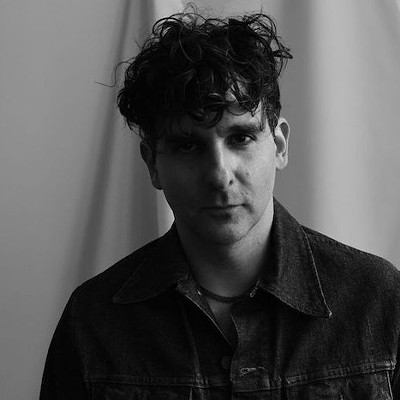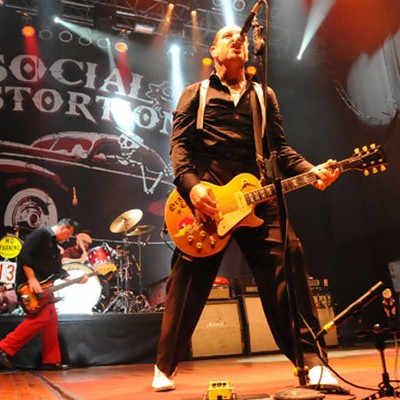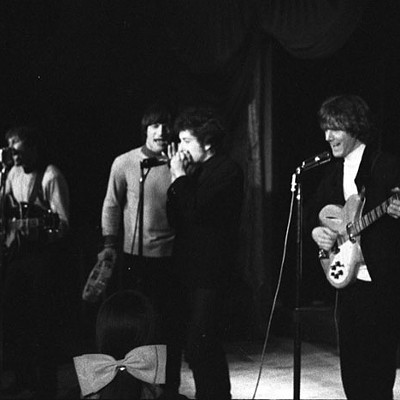Recently, and with a certain amount of controversy, Rap-A-Lot made available a bundle of previously unreleased songs disguised as a new Pimp C album.
Posthumous records are unsafe footing. It's entirely capable that they can be built into capable, glorious, heartbreaking goodbyes; in 2009, Bun B accomplished this with UGK's heralded UGK 4 Life. But just as likely come the slippery ones, the ones that smell bad and digest worse. Tupac died in 1996, but has released eight albums since 1997.
A proper review of Pimp's album is forthcoming. In the meantime, five posthumous records that are up for discussion:
This one presents some issues. See, technically, this is a posthumous album - Biggie died on March 9, 1997, and the album was released less than two weeks later. But the proximity of the dates makes the discussion tacky. LAD is either (a) not a posthumous album because, sure, it was released after his death, but it was almost certainly all the way finished, which means it was meant while he was still alive, which means it's not really posthumous; or b) extremely exploitative, an album released when the shock of loss was still extra high, thus almost guaranteeing high album sales. Choice is yours. Either way, it's still a seminal piece of work.
J-Dilla had four albums that came posthumously; this was the first. This one was successful for meritocratic reasons, but it was also successful because of a perfectly unfortunate three-part coincidence.
First, for the bulk of his career, Dilla was underappreciated. Second, to that point in time, Dilla had gone nearly five years without releasing a proper solo album. People were excited for it. Third, he passed before it was finished. As such, people fell over themselves to champion him and his product (a completely natural response). His perceived talent saw an exponential spike.
So many people began talking about how underrated he was that he became overrated. That's the dirty little J-Dilla secret people don't want to acknowledge. People will argue J-Dilla's greatness to the death. But the number of people doing so in 1995 was drastically smaller. Dying doesn't make your music better, but it sure as shit buffs your legacy some.
A parallel between Tupac, king of the posthumous release, and Fat Pat, who was murdered before his first album was ever released, exists. From The H-Town Countdown:
Saying that Fat Pat is Houston's Tupac is an acceptable observation for any number of reasons. There are ideological instances, (both discussed the sociopolitical issues enveloping them in a culturally relevant manner), unfortunately obvious instances (both were murdered by gunfire in cases that have yet to be resolved), argumentative instances (it is wholly possible to both overstate and understate their significance at the same time) and even aesthetic instances whose fundamental similarities might be a little ironic (Tupac's "Thug Life" tattoo has become an iconic image; there's a tattoo parlor in Houston called Ghetto Dreams that's likely Thug Life-d several people).But those all squish semi-neatly together into one grander reason: The level of their importance and influence parallel one another, Tupac's within the national conscience and Fat Pat's within Houston's complex rap construct.
We picked this one, his third posthumous album, over the others because of the implication of the title. It's far more interesting than Tupac's Resurrection.
New York's Big L is, in a broad sense, rap's Earl Manigault; a blindingly talented man who's eventual reputation has become so entwined with hearsay and reflexive championing that he has become more folklore than person. In 2009, an eighth grade boy on a basketball team we were coaching mentioned in passing during a practice that Earl Manigault was the greatest player who ever lived.
Impressed, we asked him to continue. What do you know about him? Where's he from? Did you read about him? Hear stories about his greatness? His response: I don't him, my brother told me he was the best. That's Big L. He very well may be the greatest rapper of all-time. But he was going to get there anyway.
Pimp C, the archetype, is arguably the most colorful character in Southern rap history. He was already approaching Legendary Status before his death. He'd conquered a local audience, a national audience, the radio, the print world, prison, Lil Troy, the state of Atlanta and an untold number of other things.
When he died, holy Christ, he became a hyperbolized icon. Everybody everywhere loved him and the vitriol his twang carried. They still do today. It's impossible to find somebody who will say something negative about him. He's rightly become hallowed, the one point every rapper in the world seems to agree on.
Naked Soul mostly saw slightly above average reviews, but that was due largely to his looming presence. It felt patchy and stitched together, which, when measured against something like the godly Ridin' Dirty, UGK's masterpiece, wasn't quite enough to make it feel like he'd finally been able to provide the solo album he had in his bones.
Follow Rocks Off on Facebook and on Twitter at @HPRocksOff.





